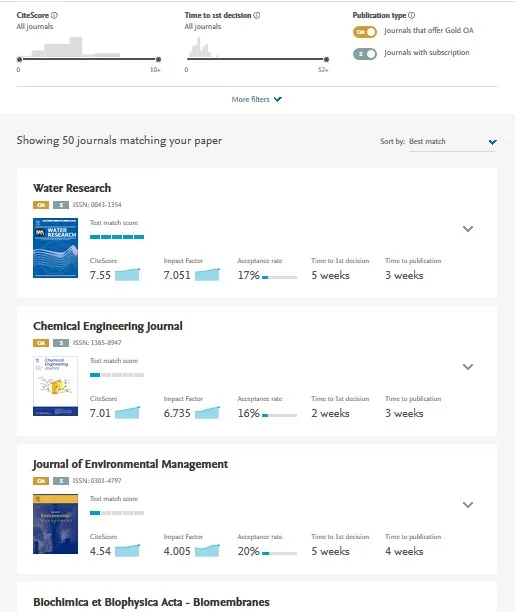Authors' Update - keeping journal authors in touch with industry developments, support and training

Unfortunately we don't fully support your browser. If you have the option to, please upgrade to a newer version or use Mozilla Firefox, Microsoft Edge, Google Chrome, or Safari 14 or newer. If you are unable to, and need support, please send us your feedback.
We'd appreciate your feedback.Tell us what you think! opens in new tab/window
11 February 2022 | 4 min read
By Hans Zijlstra

An upgrade for JournalFinder makes searching for relevant journals even more precise
The decision of where to submit your paper is a crucial one and at Elsevier, we know just how important it is to find the right home for your research. In 2013 we launched a tool for our authors to help them home in on the journal that would best suit their paper: JournalFinder opens in new tab/window. Powered by an advanced algorithm that identifies key words and their mutual patterns and structures, the so-called “fingerprint technology”, we created a platform that was more than just a search engine. Indeed, such has been its popularity that more than 60,000 users regularly use JournalFinder each month!
You have developed a very interesting and useful tool. Thanks!
- Feedback from a current JournalFinder user
After the initial version of JournalFinder, which delivered a ranking by best matches, we further developed the tool to share information on journal metrics that would give users more insights into the key characteristics of the publication depending on their individual priorities, such as impact, speed and reach. Around the same time we launched another platform which delivered powerful visualizations of journal metrics covering a period of five calendar years: Journal Insights opens in new tab/window. This tool enabled authors and readers to dive even deeper into the data, compare trends easily and derive considerable insight into the performance of a journal over a long period.
Despite the success of the JournalFinder tool and the many positive comments that we received from authors, we don’t like to rest on our laurels! As a result, having sought and received a good deal of useful feedback from our users, we have been hard at work on an improved version of JournalFinder, with the intention of integrating even more closely with the Journal Insights tool. Five years after the initial launch, we are pleased to say that both the front and back end of the system have been improved, with additional functionalities that help you to better specify and act on your preferences.
We are excited to announce the following new options:
Additional keyword searching options, with “look ahead” autofill
Subject area filter via All Science Journal Classification (ASJC) codes (as used by Scopus) in a drop-down menu
Introduction of new filters and histograms: CiteScore, Impact Factor, time to first decision, time to publication
Easier sorting of results on all metrics (default order = best match)
Higher output limits: maximum of 50 journals in search results list, instead of 10 in the previous version
Three example searches across diverse science areas, for “playing with the tool” in case you have no abstract at hand but want to see how to use it
Depiction of journal covers in the results list for easy, visual identification
Expandable search results list including open access options, top three readership countries, journal scope details and direct submission link
Trend visualization for most metrics, linking to the Journal Insights tool
Publication status validation: JournalFinder will automatically check on Scopus if your title/abstract already exists (useful to see if your choice of publication made sense or if you want to check for a similar article for the future)
Three recent articles from ScienceDirect for a quick indication what type of articles have recently appeared in the journal

Though we’re very pleased with the latest developments for JournalFinder, our work is not yet done… Later this year, for example, we will integrate a further update that gives you direct feedback on open access fees for articles in journals that have open access options. Currently you will see a so-called “List price APC”, a base price for the Article Publication Charge that must be paid when publishing OA in the journal in question. In many cases this list price is not, in fact, the price you pay, as your research institution affiliation and any support from a funding body may well result in a discount on what you actually need to pay. The future release will show more accurate OA information.
We trust that the enhanced version of JournalFinder opens in new tab/window is useful for you and helps to point you in the right direction for your next publication whilst also delivering a wealth of insight about the various options and characteristics of journals open to you. We welcome your feedback on this new version of the JournalFinder tool, as we realize this is a work in progress that can only advance with your input. To that end, feel free to comment below and let us know what you think and if you have any suggestions for further improvements!

HZ
